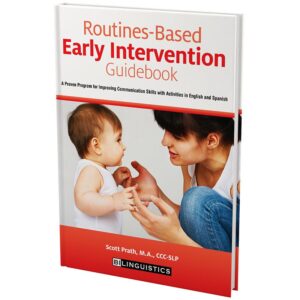During my time as a speech-language pathologist (SLP), I’ve had the pleasure of working with fantastic families. I’ve often marveled at how parents and caregivers give so much of their time and resources to support their children’s communication. For example, last week, I had a parent text me a video of her son working on articulation drills before going to bed—Mom worked with him, she praised him and she reinforced his awesome R-sound.
However, after spending time with parents during Individual Education Plan (IEP) meetings, in homes during Early Childhood Interventions (ECI) visits and in our clinic, I’ve observed a few places where families can support their child’s communication needs. Caregivers are VIPs, and, with a few communication tips for parents, great gains can be made at home.
Here are five communication tips for parents:
1. Talk less

Here’s the thing. The more we talk, the less our children talk. If you were sitting in on one of my speech therapy sessions, you will realize that, most times, it’s rather quiet. If your child does not talk at all, then modeling language at his level would be appropriate. For example, when my Ruby was 2-years-old, she was not speaking. When she showed interest in a toy, plush ladybug, I used a few words to describe it, “Ladybug! Ladybug kiss!” Then, I would have the ladybug kiss her cheek, and she would laugh. A great rule is to use phrases and sentences that are no more than one word longer than what the child uses. I call this the “Plus 1 Rule.” Ruby did not use any words (0 words). So, when talking to her, my longest utterance would be about 1 (or 2 words) word at the most (Ruby’s 0 words + 1 word = 1-2 word utterances).
2. Wait more.
Waiting is an essential tool for getting more talking from your child. For some of my students and clients, I wait up to 10 seconds. That’s a long time, and it’s what’s needed for some of our children. And, remember, waiting means saying something one time and waiting. Often, I hear lots of repetition within those 10 seconds. So, you say, “What’s your name?” and wait 10 seconds. If your child does not answer, then you model. “Ruby!”
3. Forego Ps and Ts.
I will be the first to say that manners are important. However, if your child does not speak, focusing on the social nuances of communication is not the best use of our time. I oftentimes see parents getting kids to sign “please” and “thank you,” and the child does not yet know the words/signs for “want, open, go, I, (child’s name).” Here are handouts from a fabulous training on Core Vocabulary words, words that are most often used in our communication, by Karen Vison, a fabulous speech-language pathologist:
https://www4.esc13.net/uploads/low_incidence/docs/BTH2013/Friday/Vinson_CoreVocabulary.pdf
4. Speech therapy can happen at home.

I am proud of my job, and I believe in speech-language therapy interventions. In saying that, I will also say that speech therapy is not magic. And, it’s a small part of your child’s week. As an SLP, I may spend 15-30 hours with your child a year. You, on the hand, have access to your child for approximately 7,500 hours annually. Sleep aside, you have much more access to your child. And, communication is something that happens all day long. So, together with the guidance of your speech-language pathologist, you can implement strategies and make a huge difference on your child’s communication in your home.
5. You are enough.
Often, I hear parents say, “I know I need to do more.” As a parent to three young children, I understand the hustle of your everyday activities—wake up, eat, get to school on time, afterschool activities, homework, bedtime routine, middle of the night feedings. It’s a lot, and you can only do the best that you can. Know that working on your child’s communication can be done throughout the day during very functional activities. Truth be told, this is the BEST way to teach communication. And, last, know that you are doing a good job, and your child is lucky to have you on his side.
Additional Resources:
8 Ways to Get Your Child to Speak
Activities to Encourage Speech and Language Development





Wow! Phuong! You have outdone yourself! These tips are a compact distillation of what I try to communicate to parents every day and your real world examples are spot on. I LOVE #5!!! Thanks for your willingness to share your thoughts, it helps us all.
Lisa,
Thanks so much for your kind words. Our parents are the true superheroes, and the work they do is challenging and meaningful. We’re just lucky to be a small part of families’ lives. Also, it was so good to see you at the TSHA conference! I look forward to seeing my Fort Worth ISD SLPs in August! It will be grand! Here’s to a busy and productive spring and a well-earned summer break!
Phuong I loved your lectures at TSHA (last year and this spring). I didn’t realize that you also wrote these articles for bilinguistics. Keep up the great work!
Hi Martha! Thanks so much, and I’m grateful that we can come to together at the TSHA Convention and the blog world to communicate about our profession. Also, our blog is written by a few awesome minds here in the office. The diversity of our skill sets, to me, contribute to the many facets of our awesome field. Please let us know if there is something we can do to support your SLP needs, and see you at Convention next year!
Take care,
Phuong